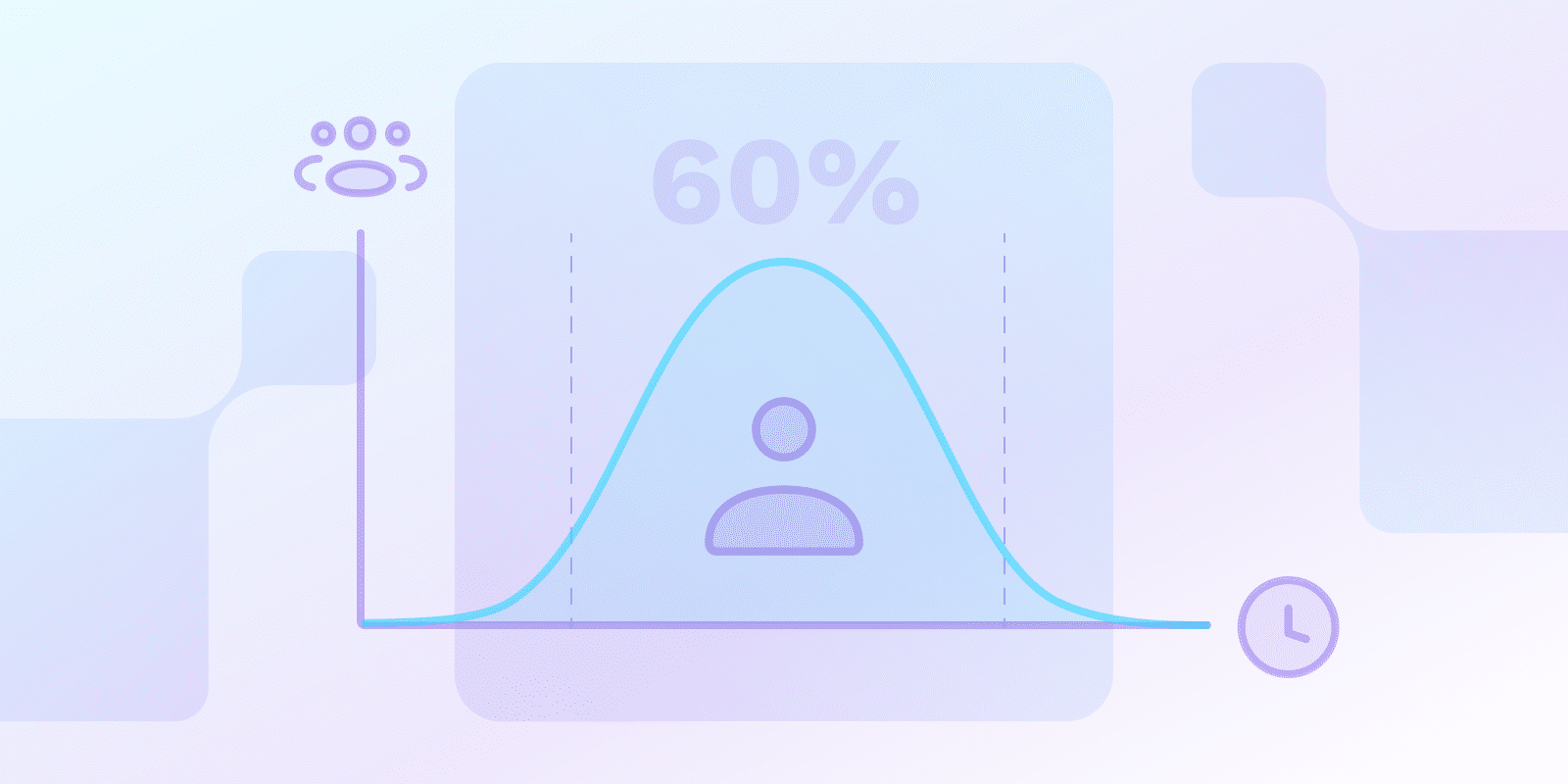Indicateurs clés de performance et mesures SaaS
Qu'est-ce que la valeur vie client (CLV) ?

Qu'est-ce que la valeur vie client (CLV) ?
Le bénéfice net total qu'une entreprise prévoit de réaliser auprès d'un client au cours de sa relation est appelé Customer Lifetime Value, ou CLV. Il représente la valeur monétaire d'un client pour l'entreprise et constitue un indicateur important de la santé à long terme de la clientèle.
La CLV aide les entreprises à déterminer combien d'argent dépenser pour attirer de nouveaux clients et fidéliser les clients actuels. Il est crucial de se rappeler que la CLV n'est qu'une estimation et peut varier considérablement en fonction du secteur et du style commercial.
Quels sont les différents types de Lifetime Value (LTV) ?
Un indicateur crucial appelé valeur vie client (LTV) mesure le montant total d'argent qu'une entreprise peut espérer gagner d'un seul client, d'un bien ou d'un service au cours de la vie de ce client.
Voici quelques illustrations de plusieurs types de LTV :
- valeur vie client (CLV): le montant total d'argent qu'une entreprise peut anticiper de gagner d'un seul client au cours de l'engagement de ce client avec l'entreprise.
- Valeur vie du produit (PLV): le montant total d'argent qu'une entreprise peut anticiper de gagner d'un seul produit au cours de toute son existence.
- Valeur vie du service (SLV) : Le montant total d'argent qu'une entreprise pourrait prévoir de gagner avec un service unique au cours de sa durée de vie.
Les entreprises peuvent obtenir des informations importantes sur leur clientèle, leur gamme de produits et leurs offres de services en comprenant et en utilisant les concepts LTV. Ces informations peuvent potentiellement influencer la rentabilité et le succès à long terme, mais elles nécessiteront un examen attentif.
| Caractéristiques | LTV client (CLV) | LTV produit (PLV) | LTV service (SLV) |
|---|---|---|---|
| Domaine d'intérêt | |||
| Mesure principale | Valeur de la relation client individuelle | Revenu à vie d'un seul produit | Valeur d'une offre de service individuelle |
| Période | Durée d'engagement client | Durée de vie du produit sur le marché | Durée de l'offre de service |
| Impact commercial | |||
| Utilisation stratégique | Planification de la fidélisation et de l'acquisition de clients | Gestion du portefeuille de produits | Optimisation de l'offre de services |
| Aperçus commerciaux | Comportement des clients et modèles de fidélité | Performance et cycle de vie du produit | Efficacité et demande de service |
| Mise en œuvre | |||
| Indicateurs clés | Fréquence d'achat, valeur moyenne des commandes | Volume des ventes, durée de vie du produit | Utilisation du service, durée de l'abonnement |
| Objectif de l'analyse | Engagement et satisfaction client | Demande du marché et concurrence | Prestation de service et proposition de valeur |
Comment la valeur vie (CLV) est-elle calculée ?
Pour calculer la CLV, la formule la plus courante utilisée est :
CLV = Valeur moyenne des commandes (VMC) x Fréquence d'achat x Durée de vie du client.
Divisez le nombre total de ventes par le nombre de consommateurs distincts ayant effectué des achats au cours de la même période pour obtenir le taux de fréquence d'achat moyen.
Par exemple, la fréquence d'achat moyenne serait de deux si une entreprise comptait 500 clients uniques et 1000 achats.
Des calculs de CLV plus complexes peuvent également prendre en compte des variables telles que le taux de rotation et le bénéfice brut par client.
Quels facteurs influencent la valeur vie client (CLV) ?
Comportement du client, satisfaction, fidélité, engagement, valeur d'achat, longévité du client, marge bénéficiaire, Taux de rétention, et le taux d'actualisation sont quelques-unes des caractéristiques qui affectent la CLV.
Chacune de ces variables est susceptible de changer au fil du temps, ce qui pourrait affecter la CLV dans son ensemble.
Les entreprises peuvent identifier les clients à forte valeur ajoutée et personnaliser les méthodes pour favoriser leur fidélité et optimiser leur potentiel en sachant comment ces aspects interagissent.
Il est important de se rappeler, cependant, qu'il peut être difficile de prédire exactement le comportement du client, et donc les calculs de CLV impliqueront toujours un certain degré d'incertitude.
Comment les entreprises peuvent-elles augmenter la Customer Lifetime Value ?
Les entreprises peuvent augmenter la CLV (valeur vie client) en :
- simplifiant le processus de paiement et en donnant la priorité aux exigences des clients par rapport à celles des concurrents
- augmentant la satisfaction client
- mettre en œuvre un programme de fidélisation de la marque client
- utiliser des modèles prédictifs pour prévoir la valeur future
La surveillance des indicateurs CLV au fil du temps est essentielle pour évaluer l'efficacité de vos Fidélisation des clients tactiques fonctionnent.
Quelles sont les limites de la valeur à vie (LTV) ?
Une mesure utile, la valeur vie client (LTV), est difficile à évaluer précisément en raison du large éventail de canaux de contact avec les consommateurs et des présomptions sur lesquelles elle repose.
Bien que les calculs de LTV puissent fournir des informations précieuses, il est important de reconnaître qu'il s'agit d'estimations basées sur des hypothèses et qu'elles peuvent ne pas toujours refléter la réalité.
Il peut être tentant de réduire le processus de calcul aux coûts directs, mais cela peut faire manquer certains aspects importants d'un client, notamment la fidélité à la marque ou les références.
Par conséquent, lors de la prise de décisions stratégiques, il est impératif d'utiliser la LTV avec précaution et de prendre en compte ses limites.
Conclusion
Les entreprises peuvent utiliser les estimations de CLV pour déterminer combien dépenser pour attirer de nouveaux clients et fidéliser les clients actuels. Elles peuvent également optimiser leur rentabilité à long terme en sachant ce qui influence la CLV et comment l'augmenter.